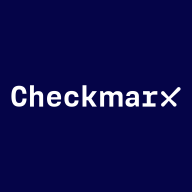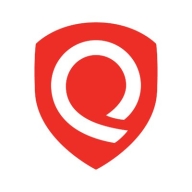

Qualys Web Application Scanning and Checkmarx One compete in the application security category. Checkmarx One seems to have the upper hand with its strong language support and capabilities to analyze uncompiled code.
Features: Qualys Web Application Scanning integrates Selenium IDE for automated login, detects zero-day vulnerabilities, and provides OWASP Top 10 and PCI-ASV scanning. It is cloud-based, scalable, and integrates well with CI/CD pipelines. Checkmarx One offers SAST, scans uncompiled code, and supports a wide range of programming languages. It presents detailed analysis and coding syntax for remediation and is noted for its automation and extensive reporting features.
Room for Improvement: Qualys WAS should improve zero-day patches, reduce false positives, and simplify its UI and licensing. Checkmarx One should focus on reducing false positives, expanding API integrations, and optimizing pricing. Enhancement of IAST support and documentation for wider language and platform coverage is also needed for Checkmarx.
Ease of Deployment and Customer Service: Qualys WAS supports diverse deployment models including hybrid and public cloud, and offers 24/7 support, although personalization could improve. Checkmarx One primarily offers on-premises deployment with dedicated technical support. User opinions vary on its effectiveness compared to competitors.
Pricing and ROI: Both products face pricing concerns. Qualys WAS is considered expensive despite competitive licensing, though it delivers strong ROI due to scalability. Checkmarx One is also seen as costly, but many users find its robust capabilities justify the investment for enhanced security and compliance ROI.
They have various options in the vulnerability management process, and when we initially bought our license, we didn't realize we needed PCI for better results, which isn't included in the default configurations.
Once we purchase the license, we have access to top-notch support.
I have dealt with Qualys's technical support, and any enhancements are challenging.
It produces similar vulnerability results as other tools such as Nessus based on version checks instead of real impact checks.
It is licensed for assets, so we just contact the team for additional licenses if needed.
At one point, there was a limitation on reporting for 100,000 assets at a time.
I would rate the stability of this solution a nine on a scale of 1 to 10 where one is low stability and 10 is high.
It could suggest how the code base is written and automatically populate the source code with three different solution options to choose from.
With the growing reliance on AI, Qualys Web Application Scanning should be updated to handle AI-based applications and LLM-based attacks.
Qualys Web Application Scanning does IP-level testing, requiring direct input of credentials, and can only scan a few pages to provide known generic vulnerabilities.
I would like it to be cheaper because it is a bit expensive compared to competitors like Tenable Nessus.
They offer discounts on bulk licenses, making it cheaper compared to competitors like Veracode DAST.
I find it a bit expensive compared to other competitors.
Regarding pricing, I think for personal use, it is costly, but if organizations are ready to pay, then it is fine as they are using it.
My experience with the initial setup of Checkmarx One is straightforward; it is not complex compared to other tools that I have tried.
It effectively detects vulnerabilities like the OWASP Top 10 without any issues in reporting.
Credential scanning is very effective because it goes in-depth into the system, crawling the pages, and reporting on vulnerabilities.
Qualys Web Application Scanning is accurate and provides minimal false positives.
| Product | Market Share (%) |
|---|---|
| Checkmarx One | 10.4% |
| Qualys Web Application Scanning | 2.0% |
| Other | 87.6% |


| Company Size | Count |
|---|---|
| Small Business | 30 |
| Midsize Enterprise | 9 |
| Large Enterprise | 38 |
| Company Size | Count |
|---|---|
| Small Business | 8 |
| Midsize Enterprise | 6 |
| Large Enterprise | 27 |
Checkmarx One is an enterprise cloud-native application security platform focused on providing cross-tool, correlated results to help AppSec and developer teams prioritize where to focus time and resources.
Checkmarx One offers comprehensive application scanning across the SDLC:
Checkmarx One provides everything you need to secure application development from the first line of code through deployment and runtime in the cloud. With an ever-evolving set of AppSec engines, correlation and prioritization features, and AI capabilities, Checkmarx One helps consolidate expanding lists of AppSec tools and make better sense of results. Its capabilities are designed to provide an improved developer experience to build trust with development teams and ensure the success of your AppSec program investment.
Qualys Web Application Scanning (WAS) is a fully cloud-based web application security scanner. The scanner will automatically crawl periodically and test web applications to discover potential vulnerabilities, including cross-site scripting (XSS) and SQL injection. The consistent testing equips the automated service to generate consistent results, lessen false positives, and offer the ability to scale to protect thousands of websites effortlessly.
Qualys Web Application Scanning is bundled with different scanning technology to carefully scan websites for malware infections and will send notifications to website owners to assist in preventing blacklisting and brand reputation damage. As digital transformation takes place in various organizations, Qualys WAS gives organizations the ability to track and document their web app security status through its interactive reporting capabilities.
Qualys WAS empowers organizations to remediate any web application vulnerabilities quickly. Some of the key tools offered are:
Benefits of Qualys Web Application Scanning
Qualys Web Application Scanning offers many benefits, including:
Reviews from Real Users
Qualys Web Application Scanning stands out among its competitors for a variety of reasons. Two of those reasons are its progressive scan and quick detection of vulnerabilities.
P.K., a senior software developer at a tech vendor, writes, "The feature that I have found most valuable is the progressive scan. It is good. It's done in 24 hours."
Nagaraj S., lead cybersecurity engineer at a tech service company, notes, "I have found the detection of vulnerabilities tool thorough with good results and the graphical display output to be wonderful and full of colors. It allows many types of outputs, such as bar and chart previews."
We monitor all Application Security Tools reviews to prevent fraudulent reviews and keep review quality high. We do not post reviews by company employees or direct competitors. We validate each review for authenticity via cross-reference with LinkedIn, and personal follow-up with the reviewer when necessary.